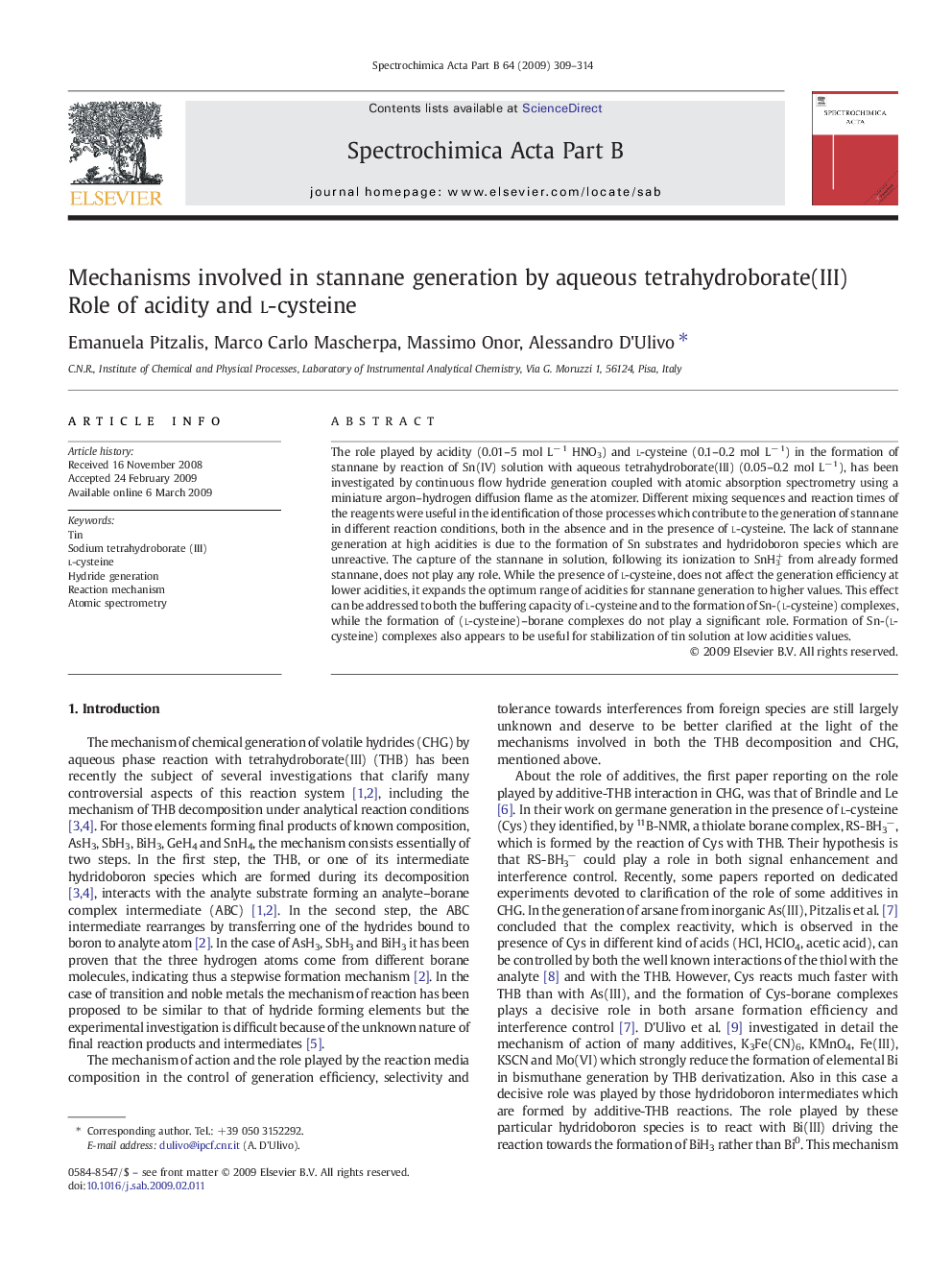| Article ID | Journal | Published Year | Pages | File Type |
|---|---|---|---|---|
| 1240394 | Spectrochimica Acta Part B: Atomic Spectroscopy | 2009 | 6 Pages |
Abstract
The role played by acidity (0.01-5 mol Lâ 1 HNO3) and l-cysteine (0.1-0.2 mol Lâ 1) in the formation of stannane by reaction of Sn(IV) solution with aqueous tetrahydroborate(III) (0.05-0.2 mol Lâ 1), has been investigated by continuous flow hydride generation coupled with atomic absorption spectrometry using a miniature argon-hydrogen diffusion flame as the atomizer. Different mixing sequences and reaction times of the reagents were useful in the identification of those processes which contribute to the generation of stannane in different reaction conditions, both in the absence and in the presence of l-cysteine. The lack of stannane generation at high acidities is due to the formation of Sn substrates and hydridoboron species which are unreactive. The capture of the stannane in solution, following its ionization to SnH3+ from already formed stannane, does not play any role. While the presence of l-cysteine, does not affect the generation efficiency at lower acidities, it expands the optimum range of acidities for stannane generation to higher values. This effect can be addressed to both the buffering capacity of l-cysteine and to the formation of Sn-(l-cysteine) complexes, while the formation of (l-cysteine)-borane complexes do not play a significant role. Formation of Sn-(l-cysteine) complexes also appears to be useful for stabilization of tin solution at low acidities values.
Related Topics
Physical Sciences and Engineering
Chemistry
Analytical Chemistry
Authors
Emanuela Pitzalis, Marco Carlo Mascherpa, Massimo Onor, Alessandro D'Ulivo,
